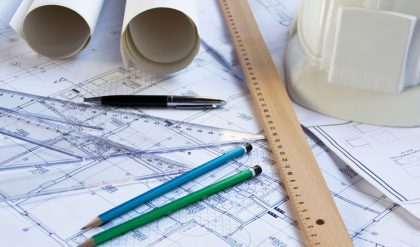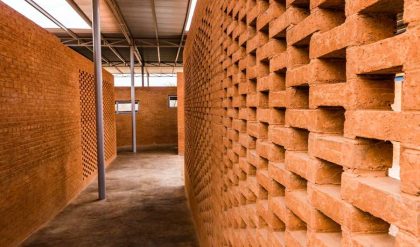A continuing series of articles on fundamental structural engineering analyses.
Stress Isn’t Always Normal
The last article discussed tensile and compressive stresses as useful structural engineering calculations. These are examples of axial, or normal, stresses developed perpendicular to the surface plane or area of interest. The shear stress experienced in a structural member or assembly is yet another fundamental analysis. Force applied parallel or tangentially to a surface plane or cross sectional area develops shear stress in the material. This force may the result of directly applied loads parallel to an area, or more commonly as the result of bending moments, obliquely applied loads, or other unbalanced forces.
Shear Failure Cuts Both Ways
The general mathematical equation for shear stress is:
Stress = Force / Cross-sectional Area, or τ = F/A
A simple cube anchored at its base surface, with a symmetrical cross sectional area of one square meter and a force of 20N evenly applied to a top edge and parallel to the base, will develop 20N/m2 of shear stress. Once again this straightforward, illustrative example has little bearing in realistic engineering applications, but it does model how shear stress can develop and act in a structural system.
A more realistic example is that of a mounting bolt with a uniformly round cross section holding a flat metal plate in place. A tensile load applied to the plate will induce shear stress in the bolt. If the tensile load exceeds the shear yield strength of the bolt composition, it will fail, which illustrates the importance of this analysis. Of course, this is still an over-simplified example; shear loading of a bolt is a complex analysis involving thread contact, pre-tensioning, temperature, and the geometric factors concerned with loading round beams (a bolt).
In fact, shear stresses are some of the most complex forms of required fundamental structural analyses. They develop in almost all structural loading applications, as non-uniform geometries and unbalanced axial stresses will develop internal shear stresses in structural elements. The difference in the magnitude of developed moments of a loaded beam, for example, is balanced by shear stresses within the beam. Once again, if the stress becomes excessive a localized shear failure will occur. A pair of scissors (or more aptly named “shears“), utilize this exact principle to function. The sharpened blades and levered advantage of the pivoted handles applies enough force over a very small local area to develop shear stress failure in the material being cut.
Stamp formers and dies operate on a similar principle. In the case of a metal stamp former the material is not sheared to failure, but rather a combination of shear and tensile stresses induce ductile flow in the metal in order to achieve the desired geometry.
Simply Shear Complexity
Other applications requiring shear stress analysis are stressed skin structures, slope and foundation engineering of soils, fluid flows, fasteners and adhesives, impact resistance design, and seismic engineering to name a few. In all applications, the state of stress at any point in a structural element is a key parameter vital to the success of the overall engineering design. The shear stress of it all may seem overwhelming, but fortunately many design, modeling, and analysis tools exist to assist the engineer in the structural design process.





Comments are closed.